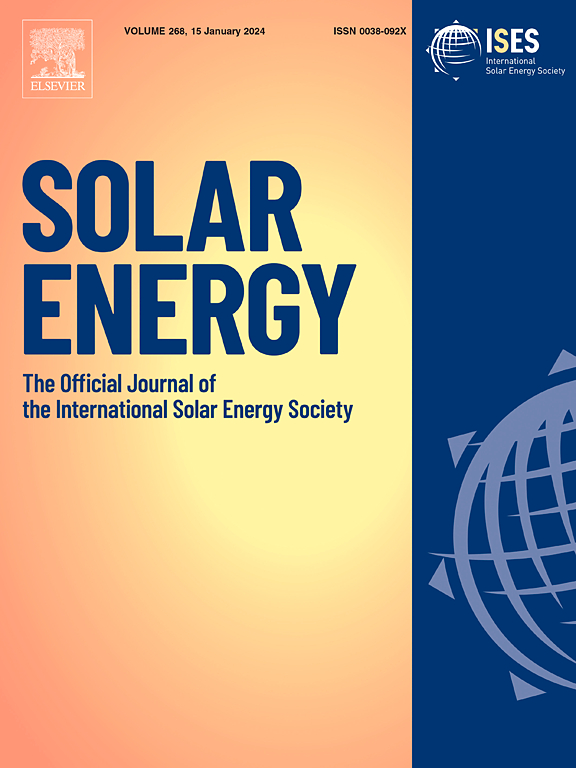基于容量密度优化电厂产量模型评估双面太阳能光伏对未来电力系统的影响
IF 6
2区 工程技术
Q2 ENERGY & FUELS
引用次数: 0
摘要
双面太阳能光伏(PV)技术目前正在接管太阳能光伏组件市场,到2025年将超过90%的份额。这项重要的技术必须包括在能源系统建模中。本研究提供了一种计算固定倾斜、单轴跟踪和东西向垂直设置的单面和双面发电厂产量的方法。介绍了一种新的方法,以最大限度地提高太阳能光伏电站的容量密度,而不需要详细的土地成本,以最有效地利用所占用的面积。结果表明,与固定倾斜发电厂相比,单轴跟踪的产量增益为15-20%,而在世界大多数地区,有限的双面增益高达10%。在特定条件下,偶有可能获得更高的双面增益。固定倾斜系统显示出更高的双面增益。优化倾斜角度和排距可以实现147兆瓦/平方公里的容量密度,尽管平均70-110兆瓦/平方公里可以实现20.2%的模块效率。对电力系统的影响,在自由成本优化情景和强制垂直双面光伏情景(包括农用光伏)中研究,太阳能光伏总容量变化±10%,风电装机容量平均变化- 10%,电池装机容量平均增加5%,全球平均电力成本变化- 2%,影响不显著。双面太阳能光伏技术已被发现是有益的,但没有改变未来电力系统的游戏规则;系统改进是广泛可能的,强调了这项技术的重要作用。本文章由计算机程序翻译,如有差异,请以英文原文为准。
Assessing the impact of bifacial solar photovoltaics on future power systems based on capacity-density-optimised power plant yield modelling
Bifacial solar photovoltaic (PV) technology is currently taking over the solar PV module market, exceeding a 90% share in 2025. This important technology must be included in energy system modelling. This study provides a method for calculating the yield of monofacial and bifacial power plants in fixed-tilted, single-axis tracking, and east–west facing vertical setup. A novel method is introduced to maximise the capacity density of solar PV power plants without the need for detailed land cost for the most efficient use of the occupied area. The results indicate a 15–20% yield gain from single-axis tracking compared to fixed-tilted power plants, and a limited bifacial gain of up to 10% for most areas of the world. Higher bifacial gains are sporadically possible in specific conditions. Fixed-tilted systems show higher bifacial gains. Optimising tilt angles and row pitch would allow for 147 MW/km2 capacity density today, though on average 70–110 MW/km2 can be achieved for 20.2% module efficiency. The impact on the power system, studied in a free cost optimisation scenario and forcing vertical bifacial PV scenario, implying agrivoltaics, is not significant with a ± 10% change in total solar PV capacity, change in installed wind power of on average −10%, increase of installed battery capacity of on average 5%, and an on average changed levelised cost of electricity of −2% globally. Bifacial solar PV technology has been found to be beneficial but no game changer for future power systems; system improvements are widely possible underlining the important role of this technology.
求助全文
通过发布文献求助,成功后即可免费获取论文全文。
去求助
来源期刊

Solar Energy
工程技术-能源与燃料
CiteScore
13.90
自引率
9.00%
发文量
0
审稿时长
47 days
期刊介绍:
Solar Energy welcomes manuscripts presenting information not previously published in journals on any aspect of solar energy research, development, application, measurement or policy. The term "solar energy" in this context includes the indirect uses such as wind energy and biomass
 求助内容:
求助内容: 应助结果提醒方式:
应助结果提醒方式:


